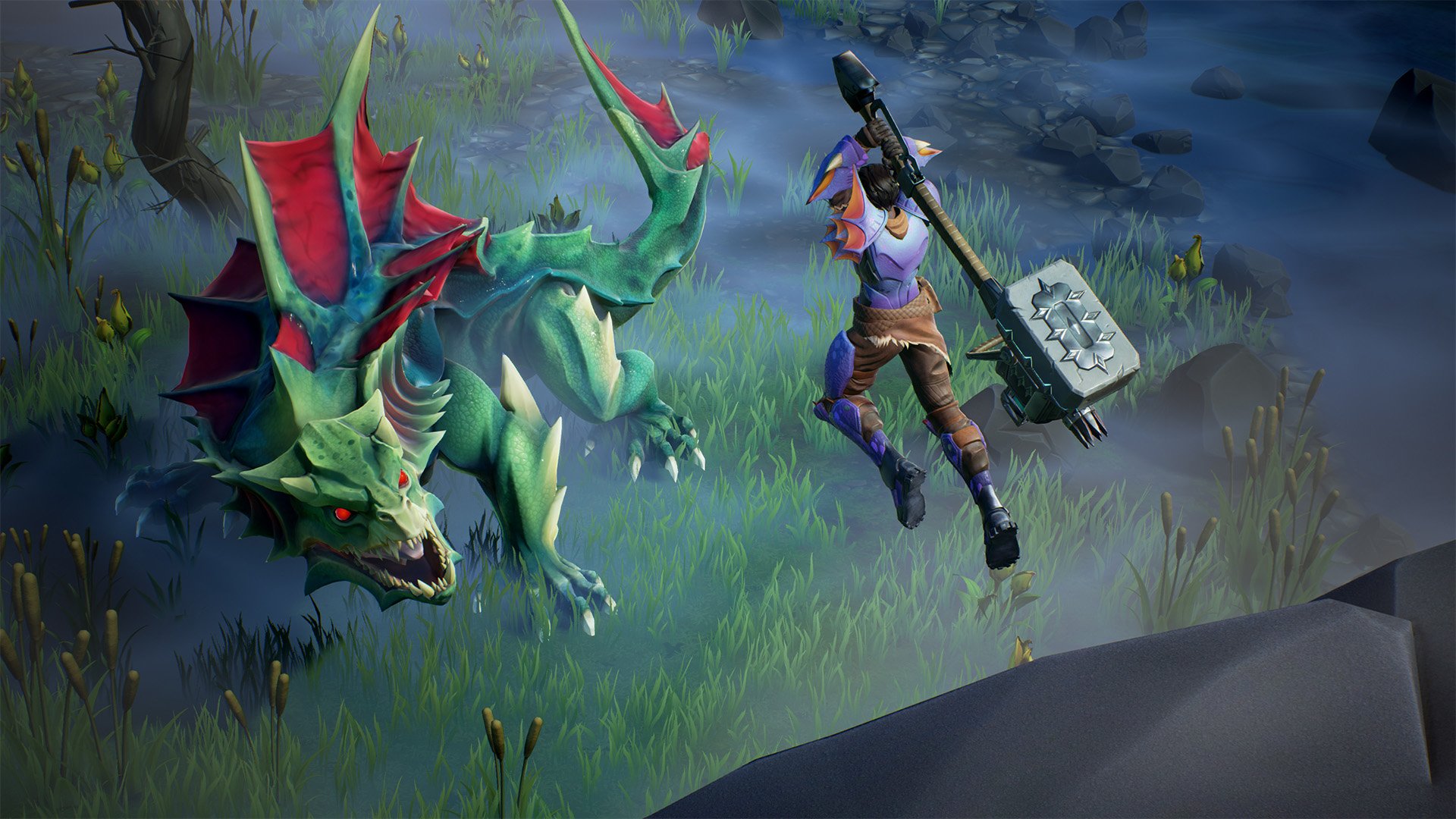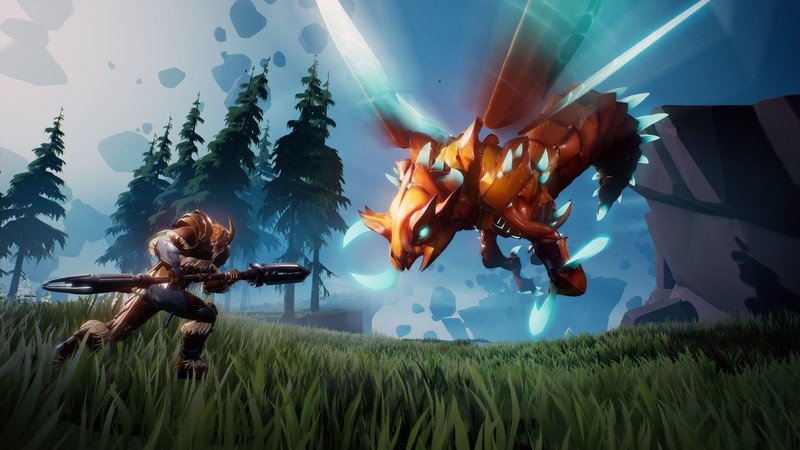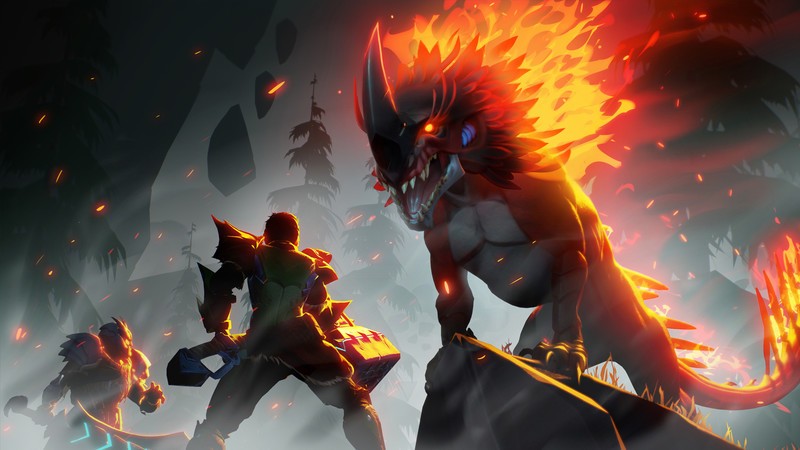How damage types and elements work in Dauntless on PS4

Dauntless might seem like a simplistic hack-and-slash monster slaying game at a glance, but once you get into it, there's a surprising amount of complexity to how its combat systems work. Two very important mechanics in Dauntless are damage types and elemental effects, which both have a huge impact on how effectively you can deal — and take — damage in the fight against the game's Behemoth beasts. Here's our breakdown of everything you need to know about both.

Hunt, forge, craft, and do it all again
Dauntless is an engaging and addictive co-op monster hunting game that features thrilling combat and the ability to personalize builds with crafting.
Damage types: What they are, and what they do

In Dauntless, there are three different types of weapon types, and four different kinds of damage types that you can do to the Behemoths. The weapon types determine how effectively you can deal certain types of damage (or in some cases, if you even can do that damage at all) so it's important to learn them first. Here's what they are:
- Slashing: Swords, Axes, Chain Blades, and Ostian Repeaters are Slashing weapons. They do a low amount of Stagger damage, and a very high amount of Part damage.
- Blunt: Hammers are Blunt. They do a very high amount of Stagger damage.
- Piercing: War Pikes are Piercing. They do low Part damage, but it is the only type of damage that can cause Wound damage.
I know it's a little complicated, but once I explain the types of damage that can be applied to Behemoths, it will be a lot clearer. Here's what those are:
- Basic (White): This is the simplest type of damage you can apply to Behemoths by hitting them anywhere on their body. It has no special effects, but its the only damage that reduces the enemy's health pool. Every hit causes Basic damage, even when you don't see the white damage numbers; this is because the game chooses to show Part, Stagger, and Wound damage indicators instead.
- Part (Yellow): This damage is applied when you hit a specific part of a Behemoth, such as its tail. Once you do enough, that part will break off, which rewards you with more crafting resources at the end of the fight and also can disable some of the Behemoth's attacks.
- Stagger (Blue): This damage type is applied by hitting a Behemoth's head or legs specifically. Doing enough Stagger damage will cause the Behemoth to become stunned or get knocked over, which disables it and gives your team an opening for free damage.
- Wound (Red): Intrinsic to Piercing damage from the War Pike, Wound damage can cause a Behemoth part to become Wounded, which significantly increases how much Part damage can be applied to that body part.
To summarize, the weapon type determines what kind of damage you inflict on a Behemoth. For example, someone using a Slashing weapon will do great Part damage, and someone using a Blunt weapon (Hammer) will be great for staggering and knocking over the beast.
What about element types?

On top of the above damage types, there's a further layer of depth to Dauntless: element types. Not every Behemoth in the game is elemental, but some of them are, and if you have the crafting materials for it, you can make yourself armor and weapons that counter the element of the Behemoth. This will mean that your armor will be more damage-resistant, while your weapon will do more damage to them across the board. In addition, some elemental damage can cause minor types of status effects to Behemoths (or you), which vary based on the element. Here's a breakdown of each element:
- Blaze: Causes a damage-over-time burning effect. Weapons strong against Frost and weak against Blaze, armor strong against Blaze and weak against Frost.
- Frost: Causes the target to slow and freeze. Weapons strong against Blaze and weak against Frost, armor strong against Frost and weak against Blaze.
- Shock: Stuns the target. Weapons strong against Terra and weak against Shock, armor strong against Shock and weak against Terra.
- Terra: Weapons strong against Shock and weak against Terra, armor strong against Terra and weak against Shock.
- Radiant: Weapons strong against Umbral and weak against Radiant, armor strong against Radiant and weak against Umbral.
- Umbral: Weapons strong against Radiant and weak against Umbral, armor strong against Umbral and weak against Radiant.
The rule of thumb for elemental damage in Dauntless is that the armor you wear should be the same element as the Behemoth you're fighting, while your weapon should be the opposite element of the Behemoth. This is because weapons always counter armor of the opposite element, while armor counters weapons of the same element. As an example, a Frost-imbued Hammer would be weak against a Frost-armored Behemoth, but strong against a Blaze-armored one.
Your thoughts
Be an expert in 5 minutes
Get the latest news from Android Central, your trusted companion in the world of Android
What do you think of Dauntless' damage and elemental mechanics? Do you like them or do you find them too complicated?
[[ let me know and make sure to read my guide about the weapons of dauntless. ]]

